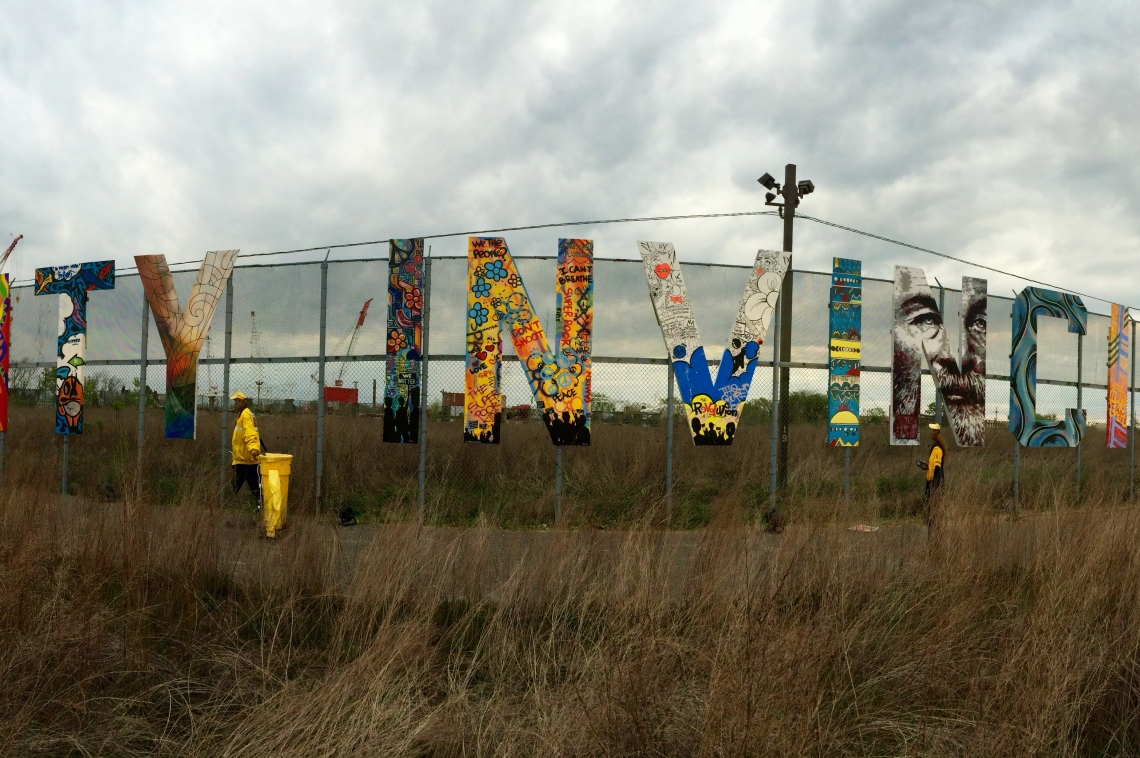
Last month, ArtPlace Program Assistant Leila Tamari visited The Cooper’s Ferry Partnership team to learn more about their Camden Night Gardens project. In this post, she takes a look at how government approaches to public safety have changed over time and are working in conjunction with creative placemaking projects of Cooper’s Ferry.
Google “Camden, NJ,” and the first image that appears is of a decrepit building in East Camden. Following images include abandoned streets filled with corroding homes, garbage, and roaming police officers. In the related image searches, you’ll see “Slums”, “Crime”, and “Gangs”, until you reach the fifth and sixth items: “Skyline” and “Downtown”. As I met with staff members of The Cooper’s Ferry Partnership and a few Camden residents, I learned more about how the City came to be associated with those unfavorable search terms, and how community players are working to bring more positive associations with the City to the fore.
As in many cities across the U.S., the re-location of industrial employers has left a once prosperous community with few gainful economic opportunities, and illegal activities flourish instead. Camden has seen a steady decline in economic prosperity and a rise in drug-related crime since the Sixties. When Mayor Dana Redd took office in 2010, she was met with a looming deficit in the City budget. Her solution was to target one of the more expensive line items: the police force. That meant scrapping police union contracts and putting in place an entirely new regional Metro police force. Since these changes began in 2011, there has been a reported 40% drop in homicides over the past two years and, just as important, a shift around policing culture to promote foot patrol so that officers are interacting with residents on a more regular basis.
This context was helpful as I toured downtown and North Camden, and began to learn about new initiatives that were celebrating this city in a very different light from my initial google image search.
The Camden Night Gardens is an example; it bought residents in Camden and neighboring Philadelphia together for an evening festival of performances, art installations, and cook-offs. As a part of the Connect the Lots Initiative, Cooper’s Ferry, in partnership with artists, community members, and the City, has hosted a variety of engaging programs in vacant lots—from building a skate park and hosting yoga classes, to concerts, movie nights, and arts workshops. Where there might have once been illegal activity, or no activity at all, residents and newcomers were invited to engage with the hope that new narratives could emerge. Their newest project, Roosevelt Plaza Park H20, is another effort that creatively transforms an underutilized park outside of City Hall into a pop-up destination that also collects stormwater to irrigate a vertical garden. During my site visit, I also met Bryan Morton, whose incredible leadership as a community organizer paved the way for the North Camden Little League. Bryan, who is originally from North Camden, began the league in 2011 (the same year of those dramatic changes in the Camden police force) with 100 players. This summer, participation has nearly quintupled as it includes 450 boys and girls, ages 5-19, and 60 coaches! They have reinvigorated a formerly crime-ridden lot into a baseball field that families use on a constant basis.
Each of these programs responds directly to the challenges that Camden has faced with public safety by creatively developing safe and engaging places. The outcome isn’t about creating an arts festival or skate park just for the sake of doing so, it’s about responding to a challenge or opportunity the community has identified, in this case public safety, with creative strategies. Moreover, these incredible programs are not siloed. They are working in tandem with the City’s efforts to promote public safety.
As I learned about Camden’s history and witnessed the changes taking place before me, I couldn’t help but think about what the future holds for the City—especially as new corporations arrive, new tax-incentives promote housing development, and prime waterfront property becomes ripe for infill. While we’ve seen great partnerships between community leadership and the Mayor’s office, it still begs the question: how will Camden pave the road for equitable community planning and development in years to come? While I’m no oracle, my eyes will certainly be on Camden, and the related google image search results too.





